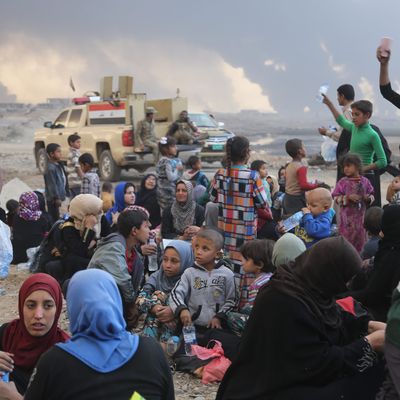
The humanitarian crisis that many feared in Mosul is beginning to unfold. Thousands of civilians are fleeing Mosul and its outskirts as the battle for Iraq’s second-largest city — overtaken by ISIS in 2014 — rages into its third day. The Guardian reports that at least 5,000 have crossed into Syria, and at least 1,000 more are waiting at the border to enter the al-Hol refugee camp.
The United Nations expects at least 200,000 more people to try to escape the city in the coming days and weeks, though it’s possible up to a million will try to flee. The U.N. predicts this could be biggest single humanitarian operation in recent years, says the Guardian.
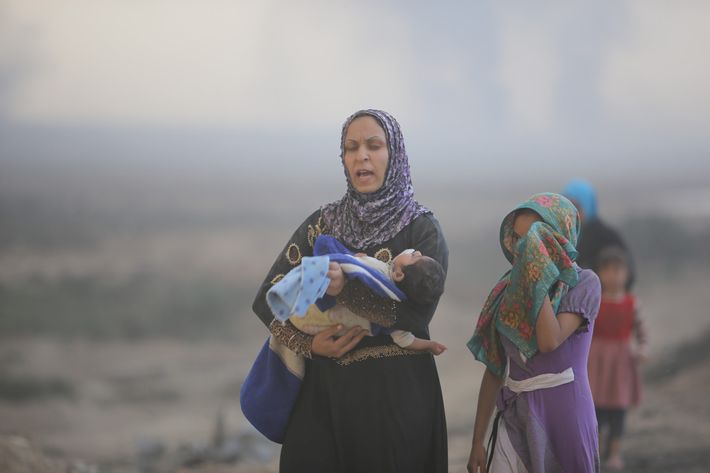
Hundreds of thousands more remain trapped within Mosul; there are risks for those who leave, and for those who stay. ISIS has booby-trapped roads with buried landmines and posted snipers throughout the city. Residents, returning to a village liberated by the Kurds, found the entire town rigged with explosives and underground defenses.
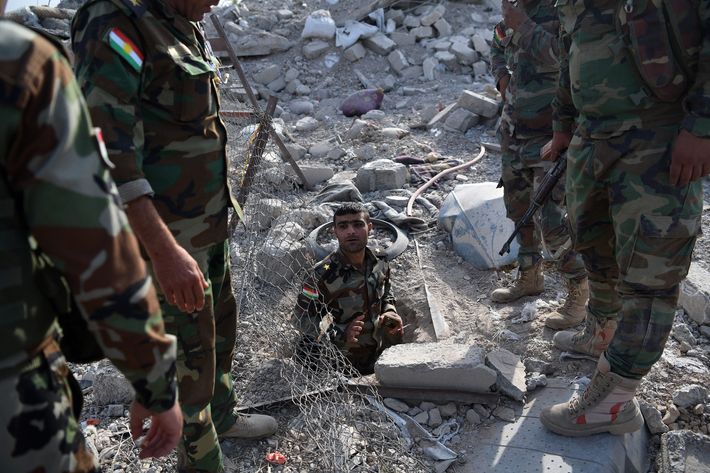
Leaflets dropped ahead of the Mosul campaign advised residents to stay indoors, and raise white flags. But if the Mosul assault drags on for weeks or months, residents risk getting trapped without supplies like food or medical care. Officials also warn that ISIS, which has about 6,000 fighters in the city, is, as a battle tactic, using civilians as human shields and blending in with the general population. A Reuters report said ISIS was rounding up and preventing Mosul residents who had tried to flee. There are worries, too, that ISIS could deploy crude chemical weapons against civilians, says the BBC.
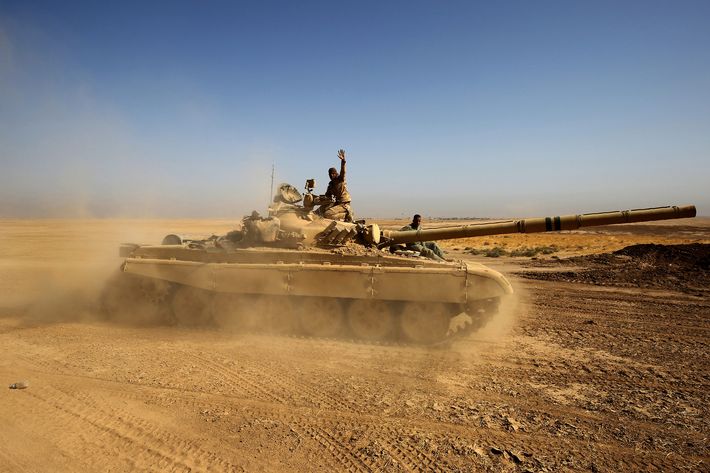
The advance of the Iraqi government troops and the allied Kurdish peshmerga forces has slowed. Troops are facing more resistance from ISIS, including heavy fire from snipers and car bombs. Right now, the two sides are battling over Qaraqosh, a Christian town on the outskirts of Mosul that was basically abandoned when ISIS took over. According to CNN, ISIS civilians may have brought civilians with them to the front lines, as part of their strategy to stall the pro-Iraqi coalition’s pace. Sirwan Barzani, a brigadier general with the Kurdish peshmerga told CNN it would likely take at least two weeks to reach Mosul’s center, and probably take at least two months to liberate the entire city.
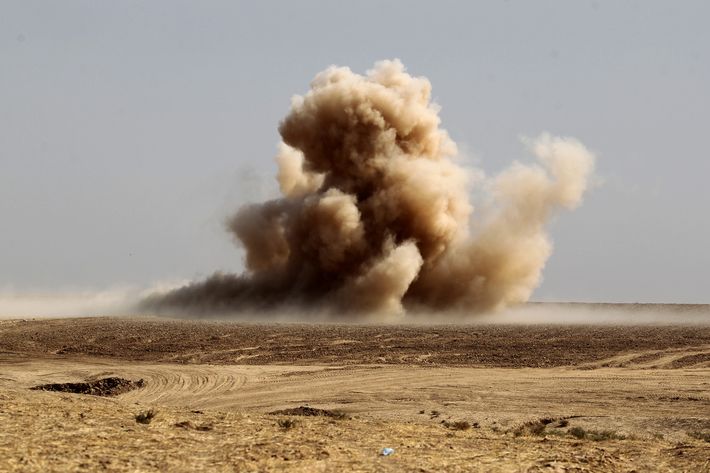
Yet the Iraqi and Kurdish troops have made real gains, with the support of U.S. air strikes. Coalition forces are about four miles from the center of Mosul, and have freed about 75 square miles outside the city. Military officials caution that, despite the first aggressive push, the offensive will likely settle into a grueling, drawn-out affair. There are also rumors that ISIS leader Abu Bakr al-Baghdadi is holed up in the city — which, if true, raises the stakes even higher for the jihadists and all but guarantees a merciless, bloody battle.





























